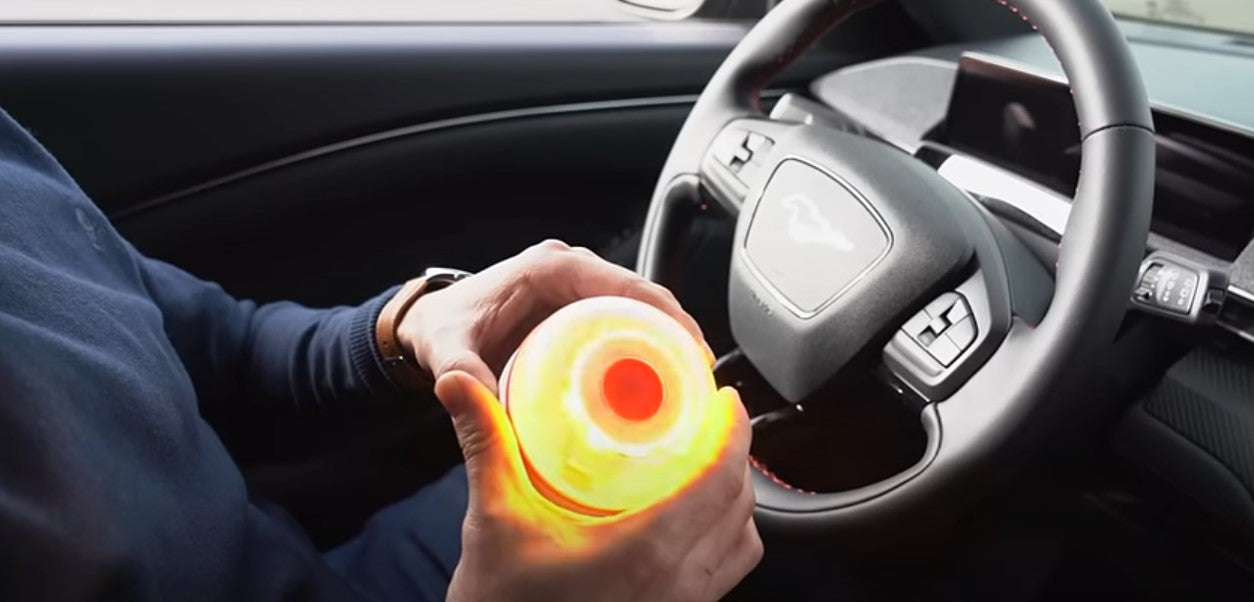The General Traffic Department (DGT) usually informs users, the media, and institutions well in advance of significant changes to road regulations, especially if they affect everyone's safety. For this reason, in recent months, it has stepped up its informational warnings about the hazard warning lights on cars and other vehicles, which will be in effect starting January 1, 2026. Yes, there's still time, but since it's mandatory, it's sparing no effort to make the mandate reach each and every one of us.
They recently sent a media release with more information about the upcoming change to connected hazard lights or beacons. Emergency lights like our approved v16 beacon with geolocation , whose features we'll discuss in more detail later.
Valid fault lights
To this day, drivers still use warning triangles in any type of roadside emergency. But they are no longer recommended by the DGT itself. In fact, in a few months, they will disappear from circulation and be replaced.
As of July 1, 2023, hazard warning lights are no longer mandatory on motorways and highways. They have been shown to be very dangerous, and their use has been linked to an increase in fatal accidents involving people who got out of their vehicles to replace them after a traffic incident. The recommended hazard warning lights are now v16 hazard warning lights. They are easy to use and connect to the DGT (Directorate-General for Traffic). Simply extend your arm, stick it out the window, and place the device (already connected and working) on the roof of your vehicle.
Current regulations on fault lights v16
Royal Decree 159/2021 , published on July 1, 2022, is also worth referring to. For signaling vehicles stopped on the road due to any traffic incident, the use of v16 light signals is not mandatory, but it is recommended. They will become mandatory from January 1, 2026 , and the familiar warning triangles will no longer be valid.
Therefore, starting January 1, 2026, v16 devices that are illuminated and connected to the DGT will be the only ones valid under Spanish law.

Help Flash fault lights
At Help Flash, we're proud to have the first DGT-approved v16 beacon with geolocation on the market. A 360° hazard warning light, visible from a distance (1 km) in low-light conditions, thanks to its cutting-edge LED technology.
NB-IoT Technology
What truly makes the Help Flash v16 beacon stand out is that, in the event of an emergency, its integrated NB-IoT geolocation technology connects to the DGT 3.0 cloud to transmit the vehicle's location. This way, the traffic control center can inform other road users of the vehicle's specific location due to the incident via variable information panels and navigators. This improves the safety of those in the stopped vehicle on the road and of other drivers.
This system seeks (and succeeds) in minimizing the risk of impact, accident, or run-over when vehicles stop unexpectedly on conventional roads, highways, and motorways.
Connected to Vodafone at no cost to the user
You don't need to be a Vodafone customer , nor do you need to pay any extra fees , to fully utilize Help Flash's v16 fault lights. How is this possible? Because it comes with a pre-included data plan that doesn't expire until January 2038 .
A comprehensive service that, thanks to Vodafone's NB-IoT network, also provides a secure connection in case we get stuck on the road thanks to its excellent coverage, no matter where we are.
As you can see, the new Help Flash IoT emergency beacon device comes with no extra worries for its users.
Conclusions
We already know that communications from the DGT with information about the new regulations regarding warning lights will be issued regularly throughout the months leading up to their mandatory use in January 2026. We at Help Flash are also generating informative content to clarify any questions. Our contact channels are always open.
Don't forget that the v16 emergency light in your vehicle must be DGT-approved, in addition to having the other features we've discussed in the article (geolocation connectivity).






